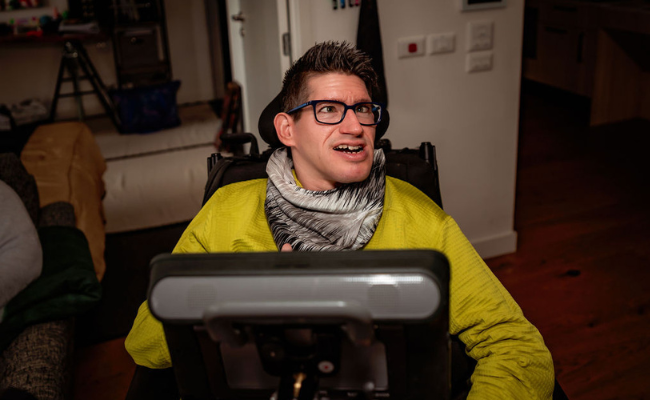Video 3: Are there different types of SDA?
A text transcript for this video can be found here.
There are 5 types of Specialist Disability Accommodation (SDA). These are referred to as the SDA Design Categories:
Basic
Covers older properties that don’t have any special design features. Basic SDA is no longer being built.
Improved Liveability
If you find it difficult to see or understand things around you, then Improved Liveability SDA might suit you.
Improved Liveability SDA is easy to move around in. Doorways, handles and switches are easy to see and it’s often easy to see from one room through to the next.
Fully Accessible
If you have a significant physical disability, then Fully Accessible SDA might suit you. Most often, people who are eligible for Fully Accessible SDA use a wheelchair to get around some or all of the time.
There are no steps in a Fully Accessible home. Doorways are wide enough for a wheelchair. The bathroom is designed to be used by people who are sitting as well as standing and the kitchen often is too.
High Physical Support
If you use an electric wheelchair to get around, or a hoist to get in and out of bed, or you need many hours of support every day, then High Physical Support SDA might suit you.
A High Physical Support home has all the features of Fully Accessible SDA, plus emergency back-up power and a ceiling that is strong enough for a ceiling hoist. It will often have an intercom that connects you to a support worker who is close by. It may also have assistive technology that suits the needs of the person who lives there. This could include doors, lights and heating that can be controlled with your voice or a device.
Robust
If you sometimes act in a way that may not be safe for you or the people around you, then Robust SDA might suit you.
The walls, windows and other things in a Robust home aren’t easily broken. It has good sound-proofing, so that sounds from outside don’t upset you, and so that any noise you make doesn’t upset the neighbours. The doors and windows are secure. A Robust home will also have a space where you, other residents or staff can go to keep safe.
You can search for SDA near you here on the Housing Hub. Or better still, sign up an create a Housing Seeker profile and let the Housing Hub do the work for you. If a housing provider lists a property that looks like a good match for your profile, the Housing Hub will let you know!
Our Housing Hub team can also help. Click here to learn more about the Housing Hub Team, our work, who to contact and, how we can support you.
Click here to return to the series overview.
Learn about housing for people with disability
If you want to find out what your housing options are, book in for one of our free workshops.
You will learn about many types of housing and you can ask us your questions.
Browse Resources

Housing Seeker Profile
Creating a Housing Seeker Profile is a simple process which involves telling us what you are looking for and what is important to you.

Housing Roadmap
The Housing Hub has worked alongside people with disability to map out the stages of a housing journey and the information you need to know about when moving through each step.

Living More Independently
The Housing Hub has teamed up with Mable to create a three-part series about living more independently.
